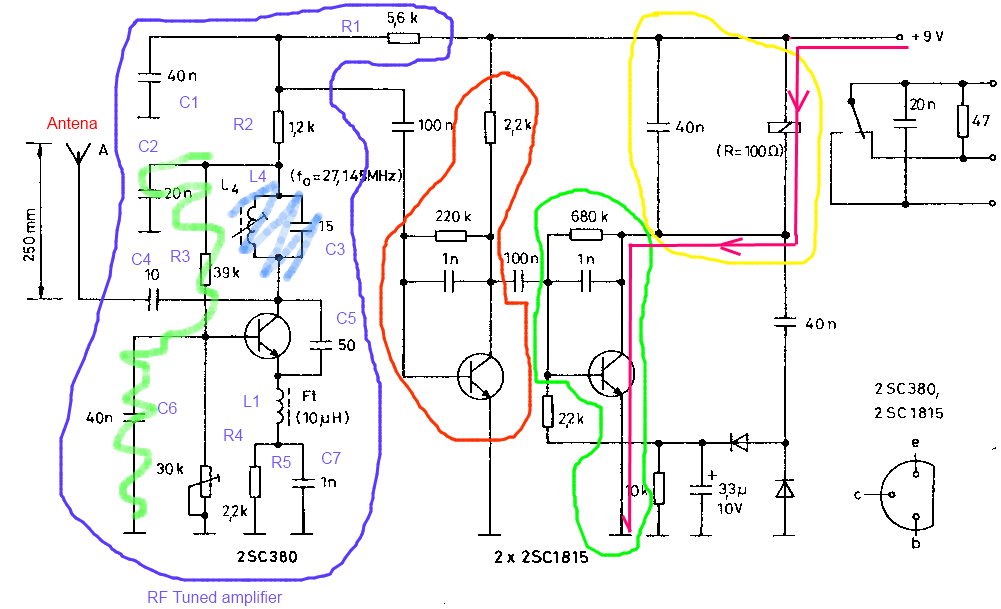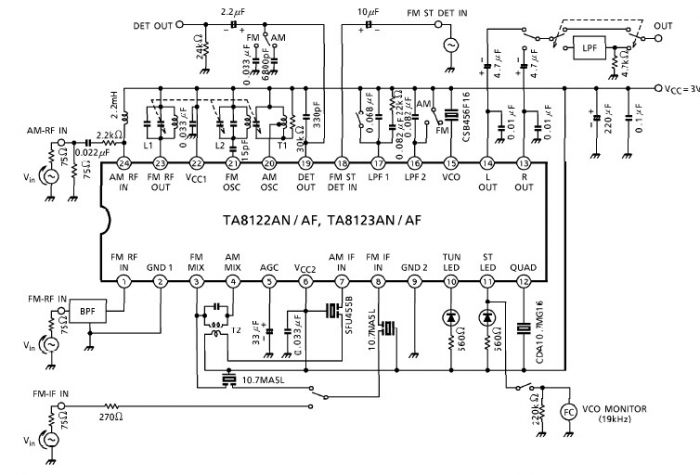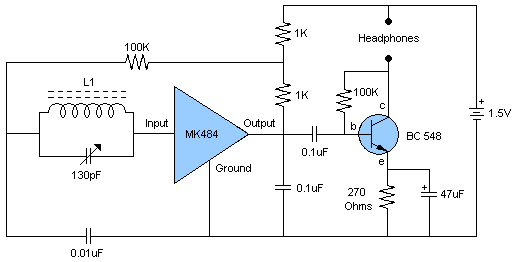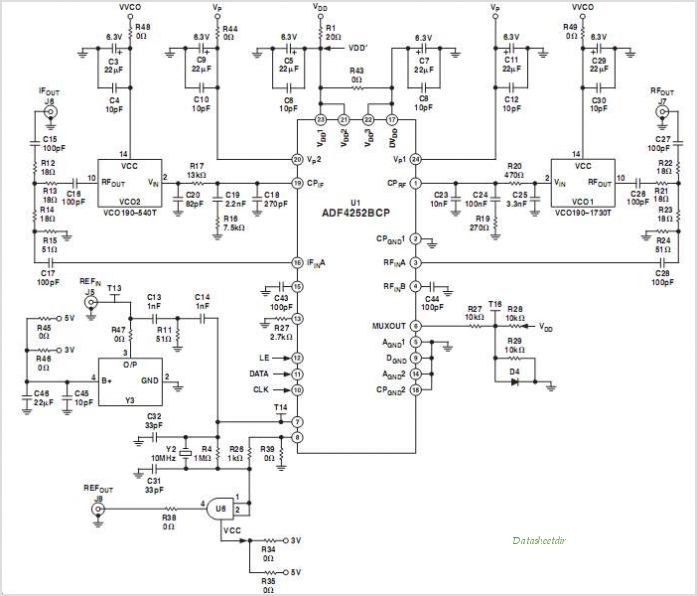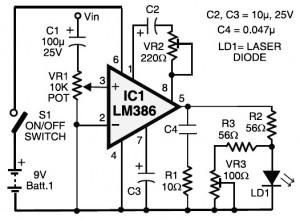
Pll receiver
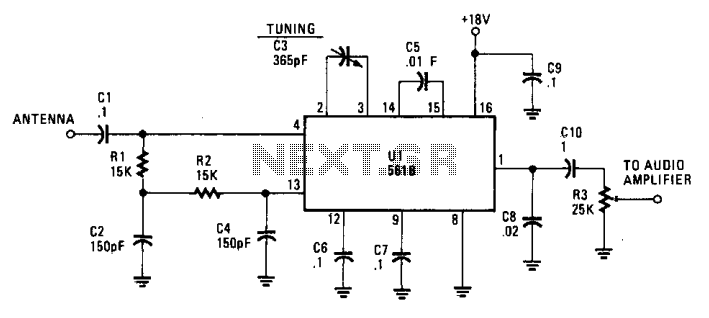
This simple AM circuit utilizes a 561B. It lacks an inductance/capacitance tuning circuit, as the 365 pF capacitor connected between pins 2 and 3 is responsible for all tuning. A good external antenna and a solid ground connection are required for optimal performance. To enhance operation further, a broadband amplifier can be placed in front of the receiver. Additionally, it is essential to ensure that the input voltage does not exceed 0.5 volts RMS.
The described AM circuit is based on the 561B, which is a low-frequency amplifier designed to operate in the amplitude modulation (AM) band. The absence of an inductance/capacitance tuning circuit simplifies the design, relying solely on the 365 pF capacitor for frequency selection. This capacitor effectively tunes the circuit to the desired frequency by creating a resonant circuit when combined with the input impedance of the 561B.
The circuit requires an external antenna to capture AM signals effectively. The performance of the circuit can be significantly improved by using a high-quality antenna, which can increase the received signal strength and improve the overall audio quality. A solid ground connection is also critical, as it minimizes noise and interference, ensuring a clearer reception of AM signals.
For users looking to enhance the circuit's performance further, integrating a broadband amplifier before the receiver is advisable. This amplifier will boost weak signals, allowing for better reception of distant AM stations. When implementing an amplifier, it is crucial to monitor the input voltage levels to avoid distortion and potential damage to the components. The specified limit of 0.5 volts RMS serves as a safeguard to maintain the integrity of the circuit's operation.
In summary, this AM circuit with a 561B and a 365 pF capacitor provides a straightforward yet effective solution for receiving AM signals, particularly when paired with a quality antenna and proper grounding. The option to add a broadband amplifier can further enhance its capabilities, making it a versatile choice for AM radio applications.This simple AM circuit uses a 561B. There's no inductance/capacitance tuning circuit. The 365 pF capacitor connected between pins 2 and 3 does all the tuning. The circuit needs a good outside antenna and a solid ground. And if you want to further improve operation, stick a broadband amplifier in front of the receiver. Just make sure the input voltage does not climb over 0.5 volt rms. 🔗 External reference
The described AM circuit is based on the 561B, which is a low-frequency amplifier designed to operate in the amplitude modulation (AM) band. The absence of an inductance/capacitance tuning circuit simplifies the design, relying solely on the 365 pF capacitor for frequency selection. This capacitor effectively tunes the circuit to the desired frequency by creating a resonant circuit when combined with the input impedance of the 561B.
The circuit requires an external antenna to capture AM signals effectively. The performance of the circuit can be significantly improved by using a high-quality antenna, which can increase the received signal strength and improve the overall audio quality. A solid ground connection is also critical, as it minimizes noise and interference, ensuring a clearer reception of AM signals.
For users looking to enhance the circuit's performance further, integrating a broadband amplifier before the receiver is advisable. This amplifier will boost weak signals, allowing for better reception of distant AM stations. When implementing an amplifier, it is crucial to monitor the input voltage levels to avoid distortion and potential damage to the components. The specified limit of 0.5 volts RMS serves as a safeguard to maintain the integrity of the circuit's operation.
In summary, this AM circuit with a 561B and a 365 pF capacitor provides a straightforward yet effective solution for receiving AM signals, particularly when paired with a quality antenna and proper grounding. The option to add a broadband amplifier can further enhance its capabilities, making it a versatile choice for AM radio applications.This simple AM circuit uses a 561B. There's no inductance/capacitance tuning circuit. The 365 pF capacitor connected between pins 2 and 3 does all the tuning. The circuit needs a good outside antenna and a solid ground. And if you want to further improve operation, stick a broadband amplifier in front of the receiver. Just make sure the input voltage does not climb over 0.5 volt rms. 🔗 External reference
